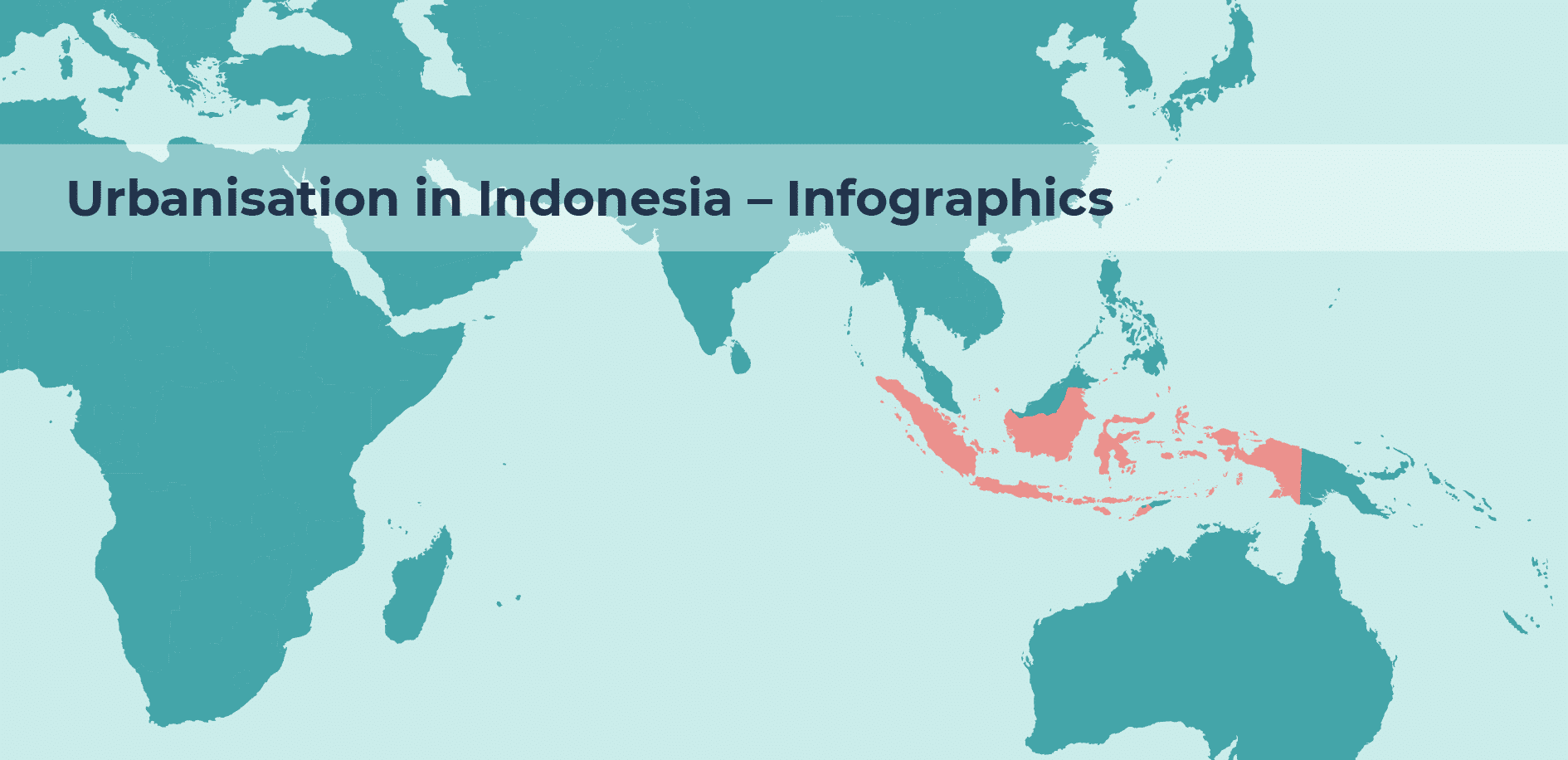Infographics: Urbanisation and Urban Development in Indonesia
URBANET’s latest infographic series on urban Indonesia invites our readers to explore facts and figures about urbanisation in this fascinating island state.
Urban and Rural Population
Both Indonesia’s urban and rural populations grew moderately until the 1980s, the rural population considerably outnumbering the urban one. Having witnessed a rapid increase for the past 40 years, urban dwellers became the majority for the first time in 2011, preceded and accompanied by a slight but steady decrease in the rural population. This trend is projected to continue throughout the next decades.
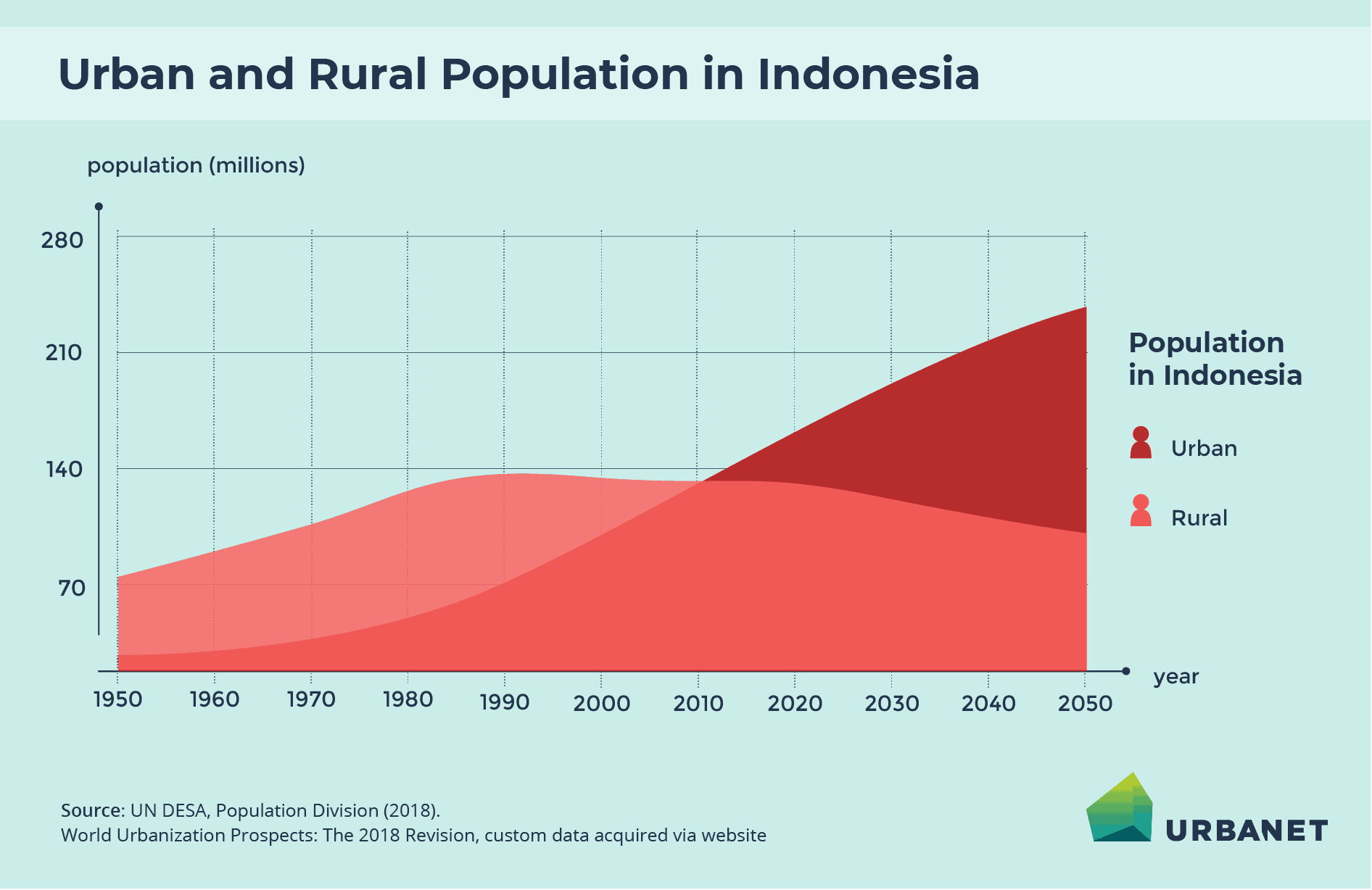
Urbanisation in Indonesia – Urban and Rural Population | Indonesia Infographics © GIZ
Size of Settlements
Indonesia has many large cities. Among them, 13 range between 1 and 5 million inhabitants. In 2018, there were no cities with a population between 5 and 10 million, making Jakarta with almost 11 million inhabitants the largest city by far.
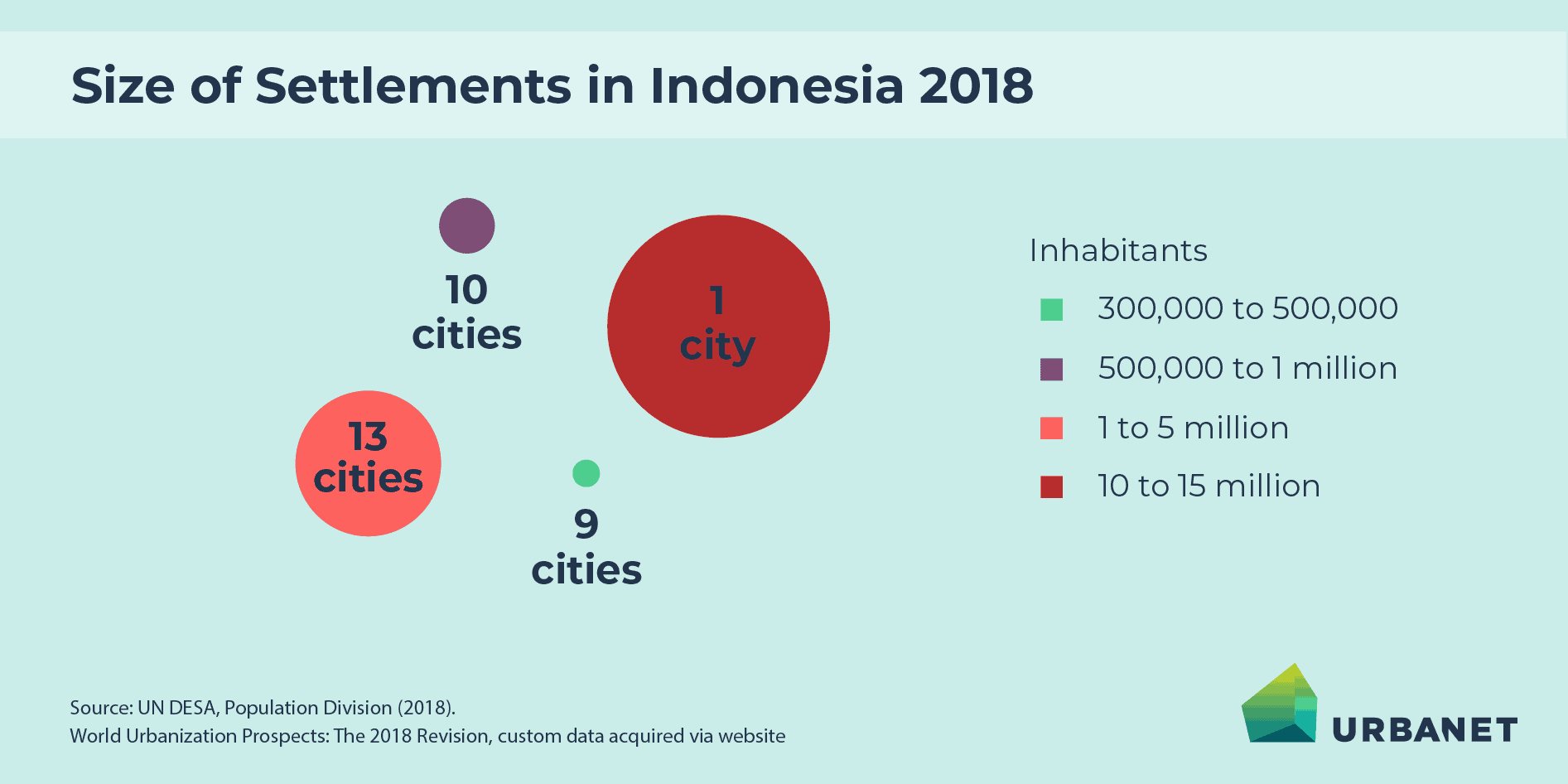
Urbanisation in Indonesia – Size of Settlements | Indonesia Infographics © GIZ
The 6 Largest Urban Agglomerations in Indonesia
The graphic shows the population size of Indonesia’s six largest cities in 2015 and 2030, respectively. Jakarta will remain the largest city with more than 12 million inhabitants, followed by much smaller Bekasi with a projected population of 4.3 million.
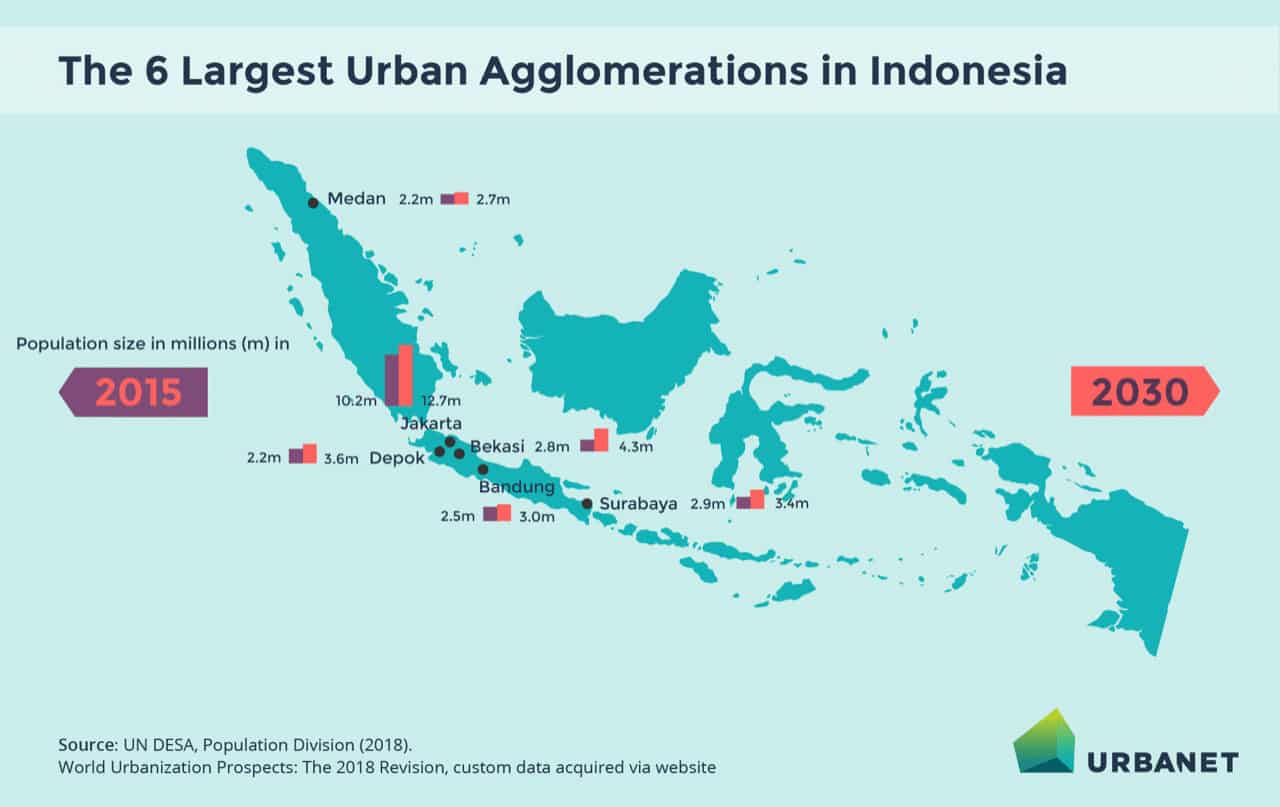
Urbanisation in Indonesia – Largest Cities in Indonesia | Indonesia Infographics © GIZ
Urbanisation in Indonesia – Key Figures
Indonesia plans to develop a new capital whose cost is estimated to be around 33 billion US dollars.
An island state, Indonesia is grappling with rising sea levels: when Jakarta, located only 8 metres above sea level, was flooded in early 2020, water rose to 1.5 metres in the city’s streets.
An almost unimaginable number of islands make up the state of Indonesia – 17,508 to be precise. Not all of them, however, are densely populated, and only 8 of them host the country’s 20 most populous urban areas.
Congestion is a major issue in Indonesian cities, where the average commuter spends 51 hours annually stuck in traffic.
Around the world, no bus system encompasses as many routes as Jakarta’s with its impressive 250 kilometres.
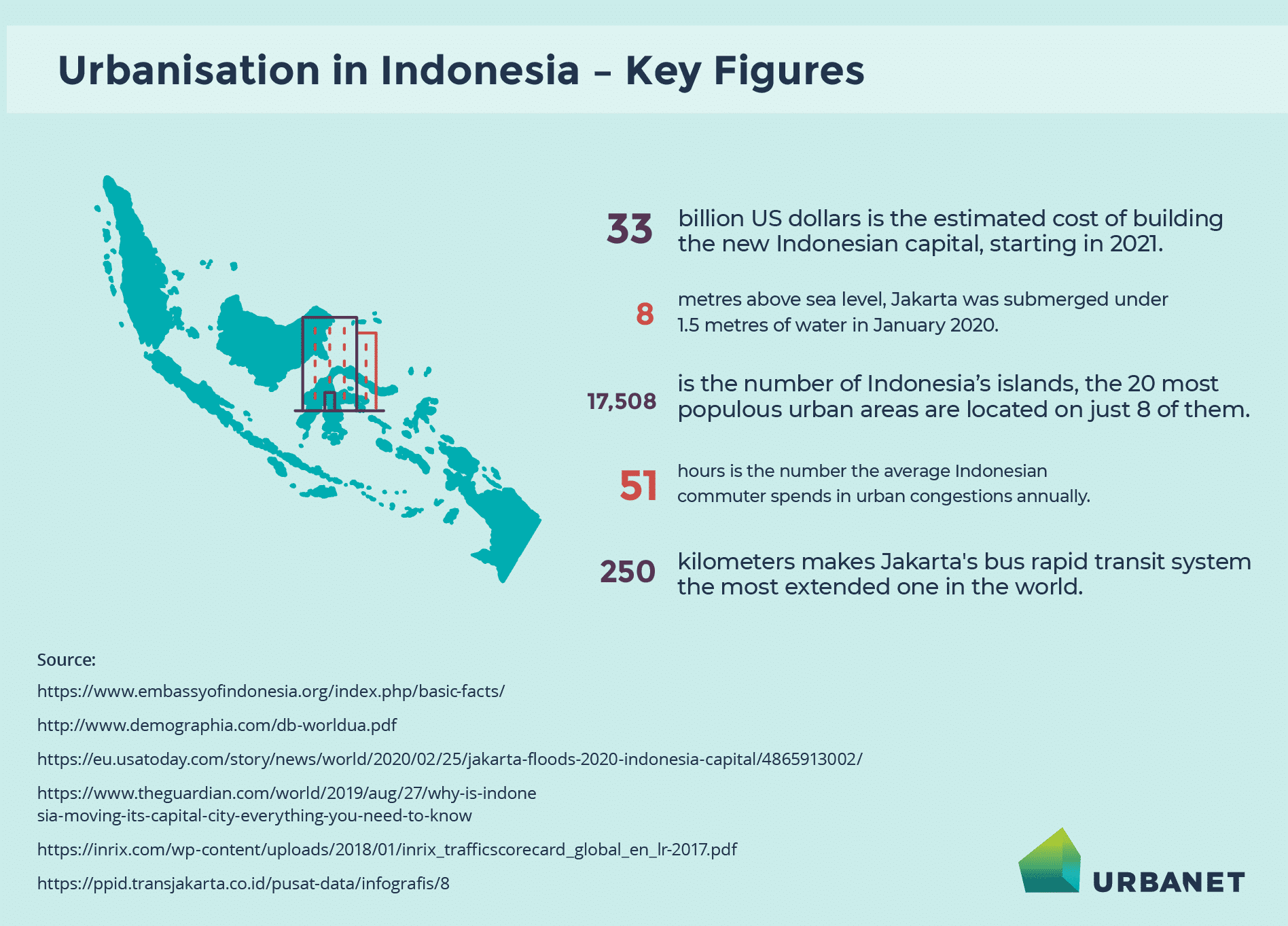
Urbanisation in Indonesia – Key Figures | Indonesia Infographics © GIZ
